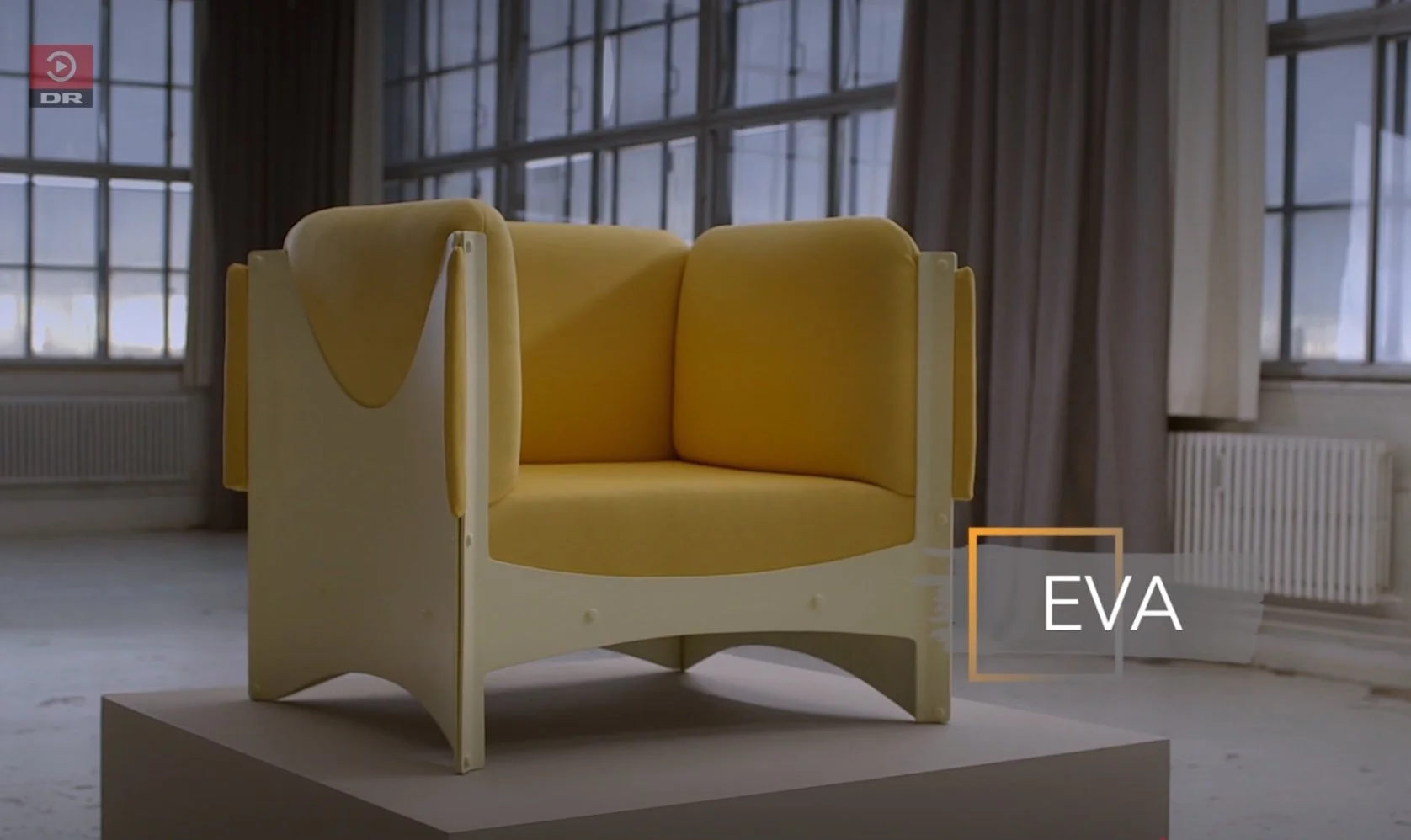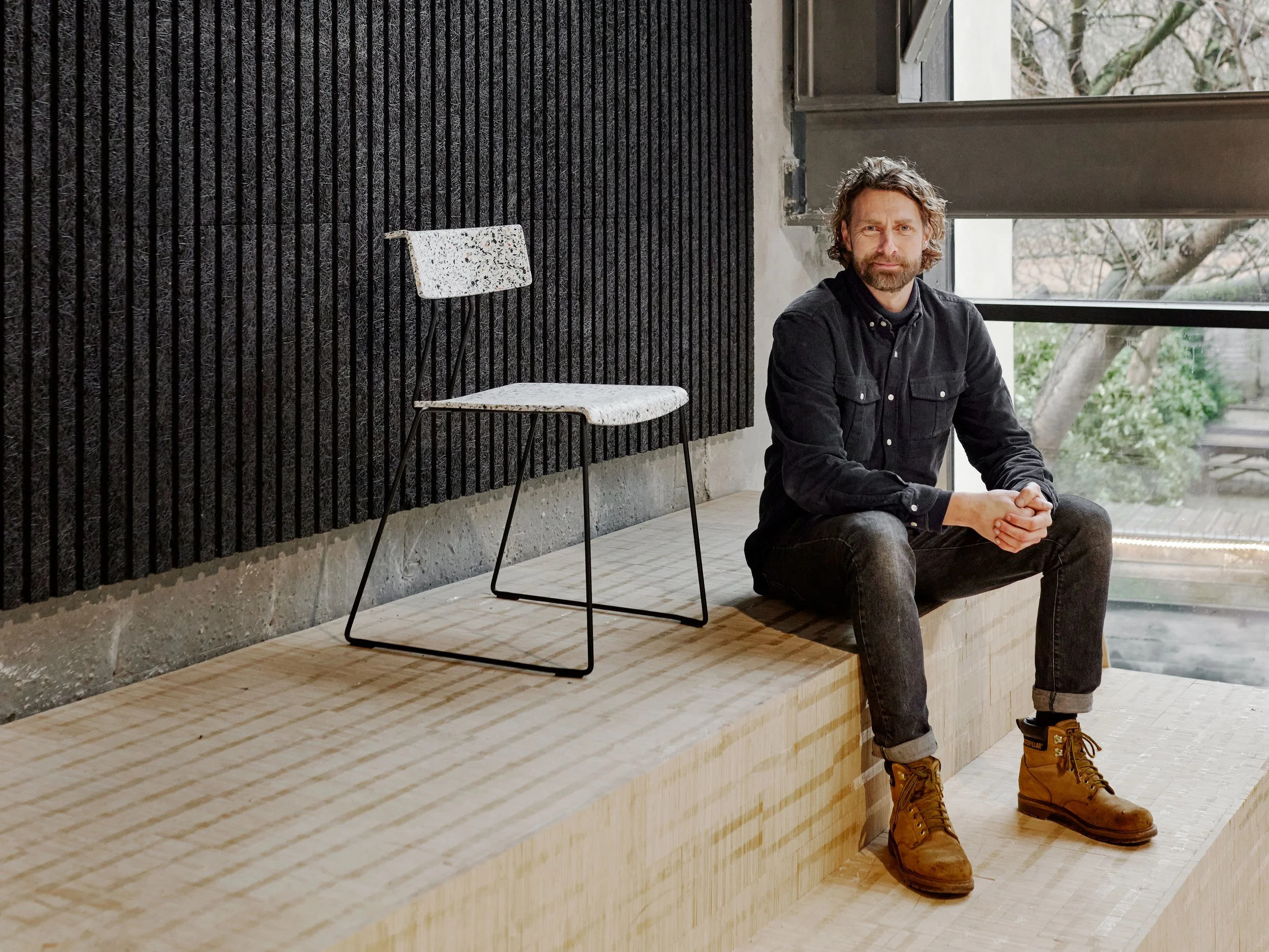Danmarks næste klassiker / Denmark's next classic - update
/Last night - 8 February - was the last programme in the current series of Danmarks næste klassiker - Denmark’s next classic - from DR television.
The project for this week was to design a lænestol or armchair and it was won by Eva Fly with a striking design that had four scooped out and linked panels to form a sort of box for the seat and with large, softly-padded cushions for the seat, back and side that seemed to encourage people to sit at any angle and even across the chair with their legs draped over what would, otherwise, have been the arm rest.
both photographs from the Montana press release
Of course, the highlight of the programme, and the conclusion of this series, was when one design of the six weekly winners was chosen as the overall winner and, therefore, as potentially Denmark’s next classic.
When it was announced, it somehow seemed obvious because the chair designed by Anders Engholm Dohn ticks so many boxes.
It was the winner of what was called the surprise week - a new introduction for this series - when the five designers tackled what was a real commission to design a chair for a new extension to the Aveny-T theatre on Frederiksberg Allé in Copenhagen.
The chair designed by Anders has a thin metal frame and seat and back in recycled plastic and it is the type of chair normally described as a sledge because the front and back legs on each side are linked by a cross bar at the bottom, along the floor, like the runners on a sledge, to give the frame lateral strength.
Too many moulded plastic chairs seem to be thin and too often, particularly in public spaces, are a dull grey or a single bold and usually unsubtle colour. Here, the plastic of the seat and back are relatively thick and primarily white with a bold pattern, rather like a conglomerate in geology.
Both the front edge of the seat, curved down to protect the back of the sitters legs, and the bold folding back of the back rest, that forms what looks almost like a shelf, are well thought through and the design, as a whole, achieves the right balance between looking light in weight but also looking strong or robust ... crucial in a public space.
The Danish design company Montana have put the chair into production and it will be called Aveny-T Stolen.
Where the design ticks another box is its style which recalls chairs of the 1950s and 60s - a period that seems to be going through a bit of a revival at the moment - but without looking like a pastiche or some sort of tribute act.
It is a stacking chair - 20 together can be carried on a trolley or 10 together standing on the floor - which is crucial if it is used in a public space which may well have several functions so where chairs have to be set out or cleared away quickly.
However, being light to move around and being able to stack away is increasingly important in homes as houses and apartments are getting smaller. There was a trend in the 50s and 60s for light kitchen chairs around a kitchen table and that may well be revived. This chair would work well in a small home where it is not possible or realistic to have a substantial dining table and four or six dining chairs that occupy all the space all the time.
The most successful design classic of the 1950s, and certainly the most successful commercially for the company, is the Chair 7 from Fritz Hansen that was designed by Arne Jacobsen in 1955. That chair too has light steel legs and a moulded seat although in the Chair7 is in plywood. At the time, it must have seemed daringly novel so how many would have anticipated its success and its popularity nearly 80 years later? Could the Aveny-T have an equally long life in the catalogue of Montana?
update:
When I asked in the Montana show room in Copenhagen, I was told that there has been a lot of interest in the chair and that it should arrive in the store in week 22.










































